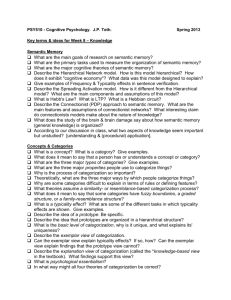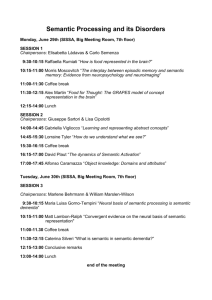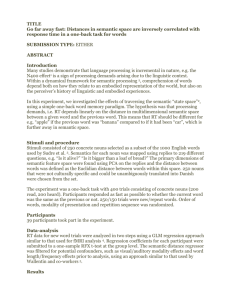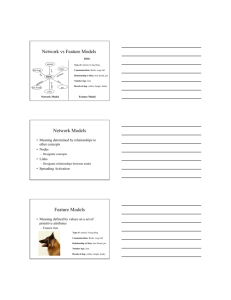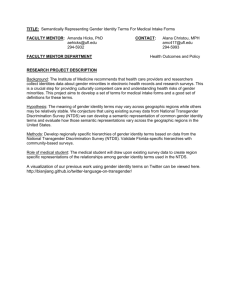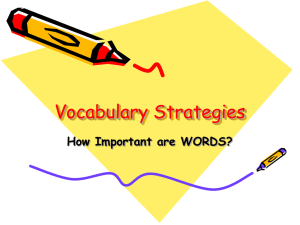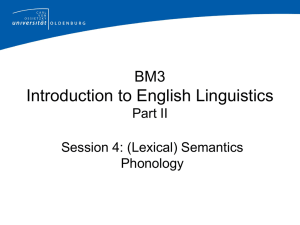semantic comparison
advertisement
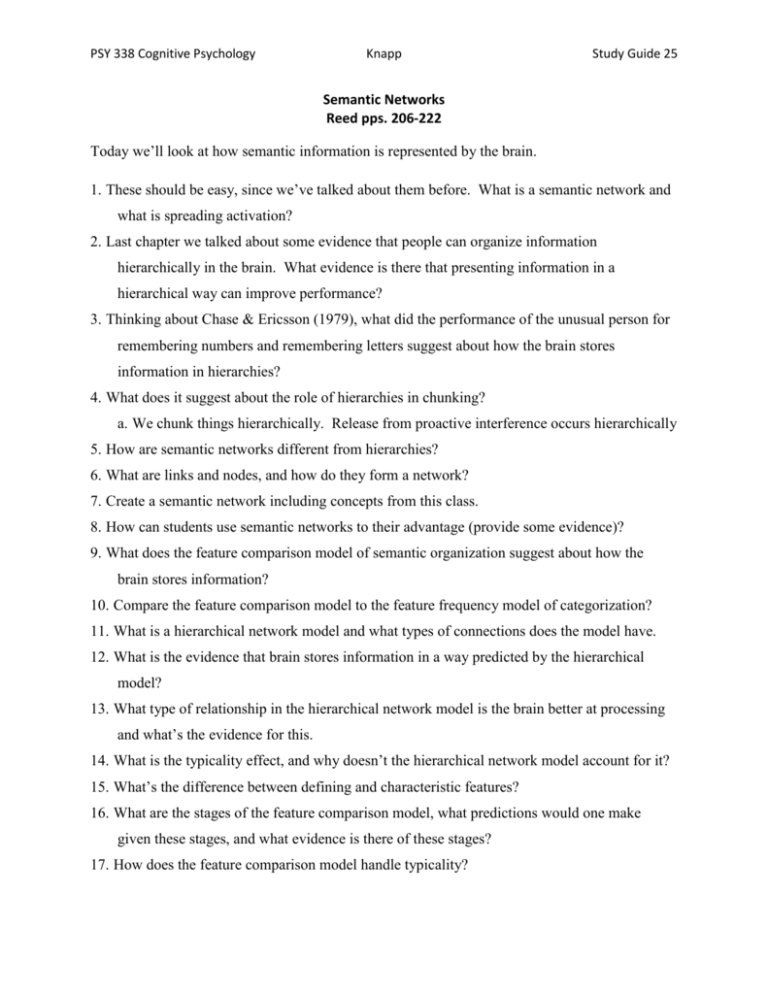
PSY 338 Cognitive Psychology Knapp Study Guide 25 Semantic Networks Reed pps. 206-222 Today we’ll look at how semantic information is represented by the brain. 1. These should be easy, since we’ve talked about them before. What is a semantic network and what is spreading activation? 2. Last chapter we talked about some evidence that people can organize information hierarchically in the brain. What evidence is there that presenting information in a hierarchical way can improve performance? 3. Thinking about Chase & Ericsson (1979), what did the performance of the unusual person for remembering numbers and remembering letters suggest about how the brain stores information in hierarchies? 4. What does it suggest about the role of hierarchies in chunking? a. We chunk things hierarchically. Release from proactive interference occurs hierarchically 5. How are semantic networks different from hierarchies? 6. What are links and nodes, and how do they form a network? 7. Create a semantic network including concepts from this class. 8. How can students use semantic networks to their advantage (provide some evidence)? 9. What does the feature comparison model of semantic organization suggest about how the brain stores information? 10. Compare the feature comparison model to the feature frequency model of categorization? 11. What is a hierarchical network model and what types of connections does the model have. 12. What is the evidence that brain stores information in a way predicted by the hierarchical model? 13. What type of relationship in the hierarchical network model is the brain better at processing and what’s the evidence for this. 14. What is the typicality effect, and why doesn’t the hierarchical network model account for it? 15. What’s the difference between defining and characteristic features? 16. What are the stages of the feature comparison model, what predictions would one make given these stages, and what evidence is there of these stages? 17. How does the feature comparison model handle typicality? PSY 338 Cognitive Psychology Knapp Study Guide 25 18. What is the category-size effect and how do hierarchical network and feature comparison models do at explaining this effect? 19. What are some problems with the feature comparison model? 20. What is the spreading activation model? 21. How does the spreading activation model account for false memories? 22. What are clusters of knowledge, and how do they pose a problem for the semantic networks we’ve discussed previously?
